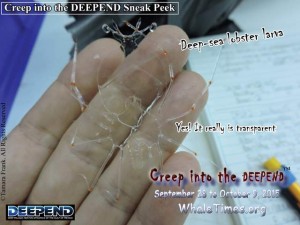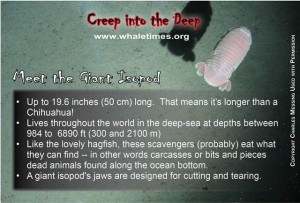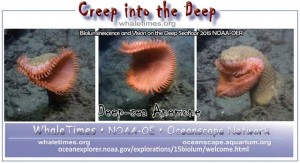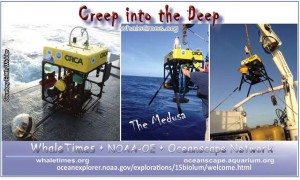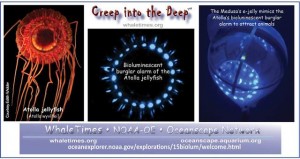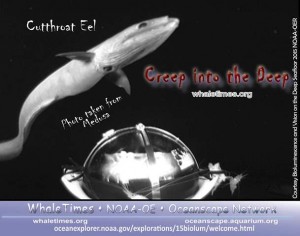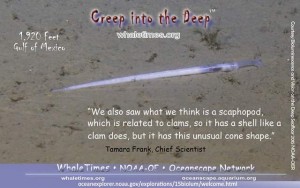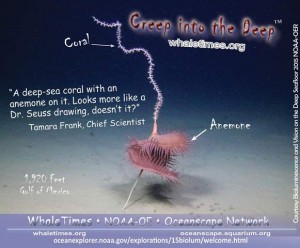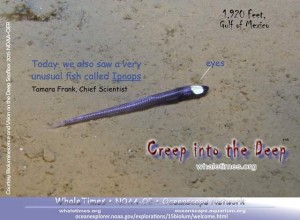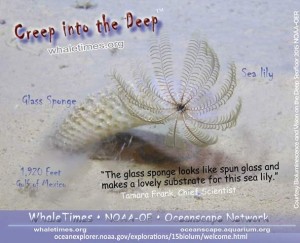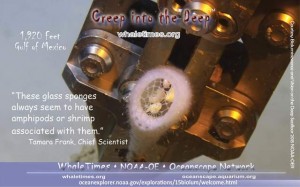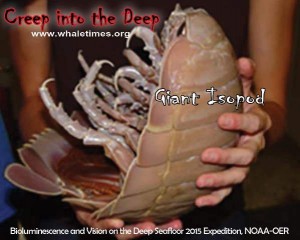Dear Virtual Science Team,
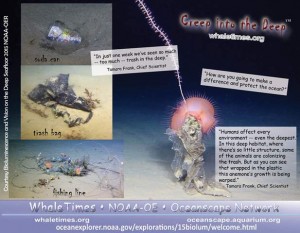 We’ve seen so many exotic and amazing creatures it makes me smile just thinking about them. As you know, the deep is a very important home to so many mysterious and marvelous animals.
We’ve seen so many exotic and amazing creatures it makes me smile just thinking about them. As you know, the deep is a very important home to so many mysterious and marvelous animals.
Some moments, though, cause my smile to fade. At the deepest depths, we see trash. Human created garbage mars the beauty even at the great depths where we’re studying, 6,562 feet (2,000 m).
At this deepest habitat, where there’s so little structure, some of the animals try to colonize on the trash. But as you can see with the anemone wrapped in the plastic, its growth is being warped. We saw fishing line, soda cans, trash bags, and even a big oil barrel.
Now that you’ve helped us explore the deep, you have an important job. Help us keep it clean.
Many people do not realize that everything they do on land affects the deep — from not properly disposing of trash to not monitoring invisible pollutants such as chemicals like the detergents, fertilizers, cars, and other products we use all the time.
How can you help? It’s easy to make a difference. Reduce, reuse, and recycle. Be aware of the products you use that might run from your home, lawn, or driveway into storm drains an into streams and rivers. It all makes it to the ocean.
What do you think you can do to help us protect the deep sea?
Tammy
Dr. Tamara Frank
Chief Scientist and Deep-Sea Explorer
Creep into the Deep Mission:
Bioluminescence and Vision on the Deep Seafloor 2015 Expedition, NOAA-OER
